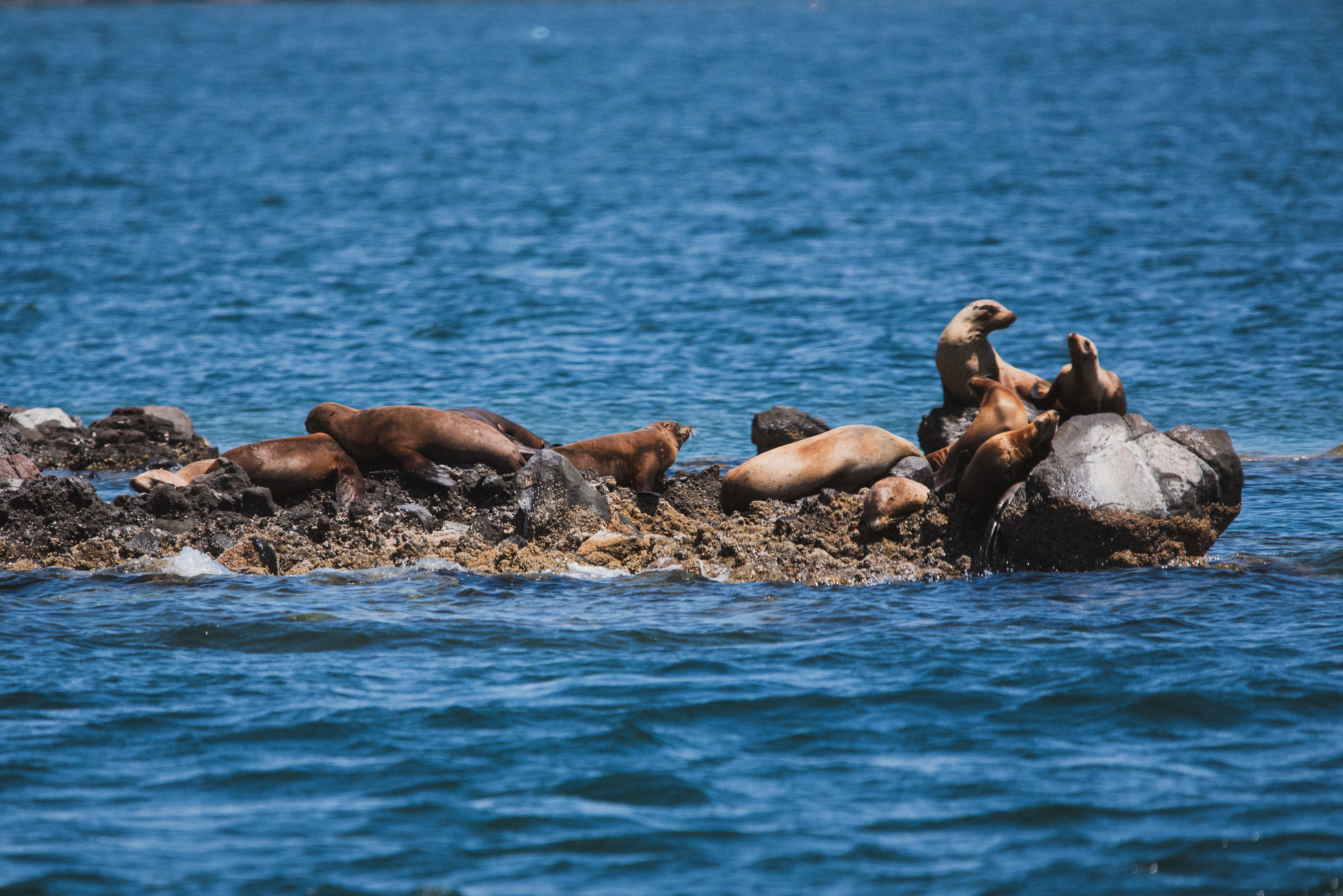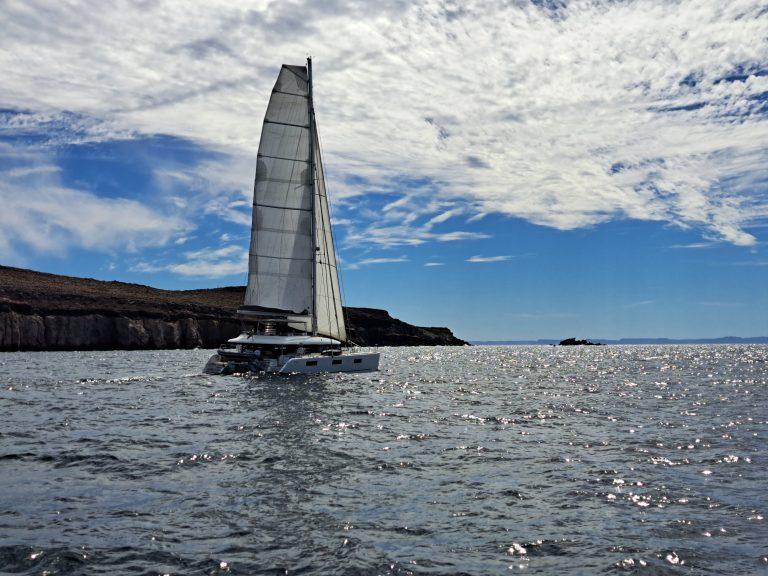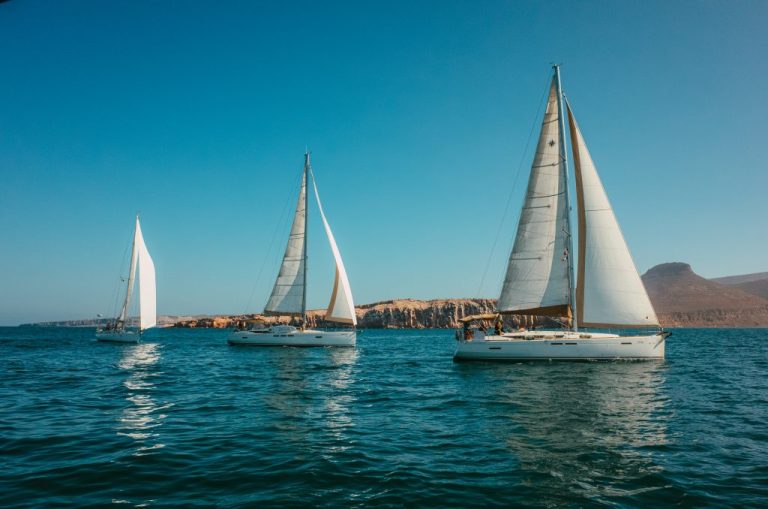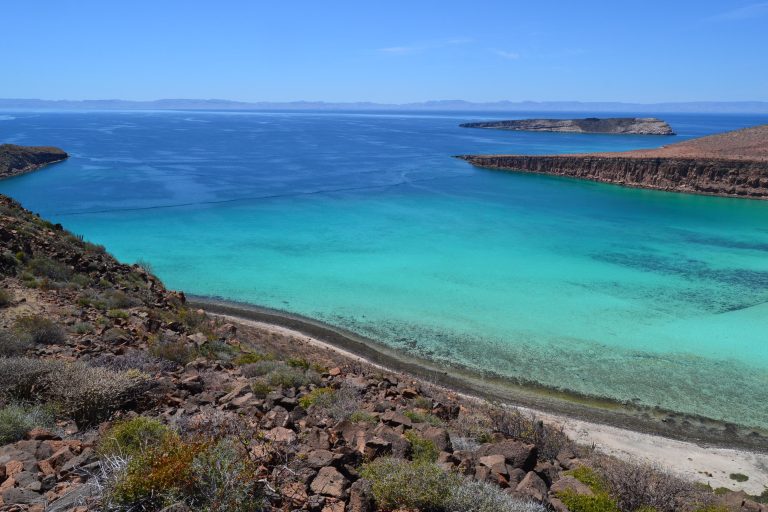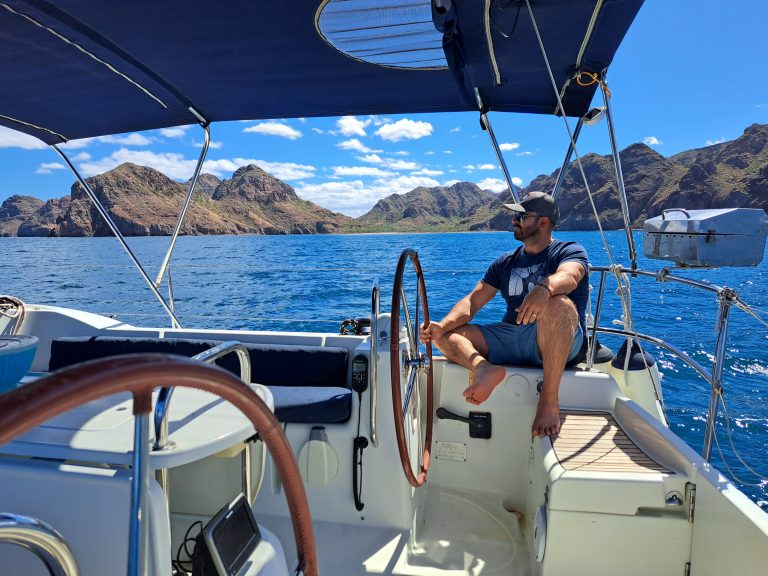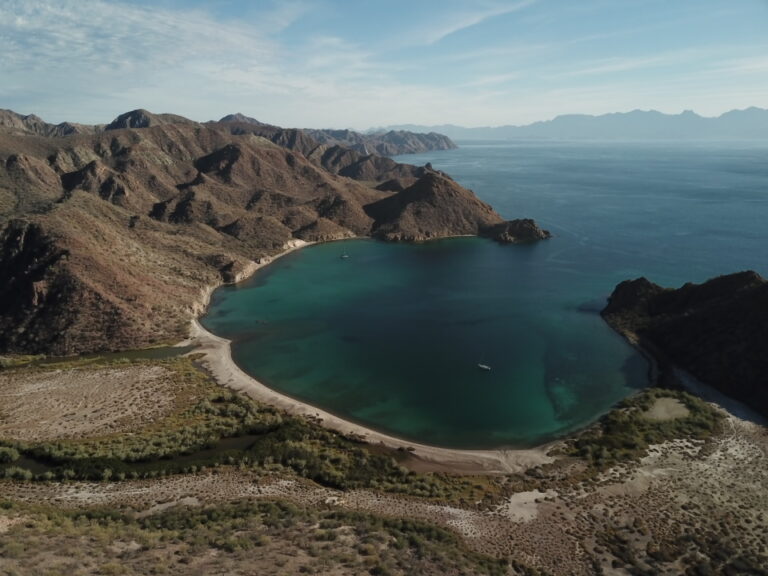Family Sailing Holidays — Taking Children Sailing in the Sea of Cortez
Introduction
A family sailing holiday can be one of the most memorable and formative experiences for children. Time aboard a sailboat reconnects kids with nature, encourages curiosity, and offers healthy limits on screens and social media. The Sea of Cortez — calm bays, abundant wildlife, warm water and short hops between anchorages — is especially well suited to family cruising. Sail in Mexico runs family-friendly trips and tailored lessons where safety, play, curiosity and learning are all part of the day. Babies and toddlers can thrive aboard with the right preparations, and older children gain confidence from practical tasks, watchkeeping and supervised helm time. This post explains why sailing with kids is enriching, how we keep them safe, how lessons are adapted for younger learners, and practical tips to prepare for a happy family voyage.
1. Why sailing is great for kids
- Real nature contact: Kids see marine life (sea lions, dolphins, manta rays, colorful fish and birds) up close, learn about ecosystems, and often develop lasting interest in conservation.
- Screen detox and presence: Time offshore reduces passive screen scrolling; instead children engage with hands‑on activities, stories, games and exploration.
- Confidence and responsibility: Simple chores — line handling, lookout duties, reefing practice for older kids — build competence and self‑esteem.
- Practical STEM learning: Navigation, weather, tides and basic engineering (engines, rigging) are real-world lessons in science, math and problem solving.
- Family bonding: Shared small‑space living, communal meals and evening storytelling create strong family memories and conversation away from daily noise.
2. Safety for children — our practices
Safety is central to family trips. Sail in Mexico follows strict protocols to ensure children of all ages are safe and comfortable:
- Briefings and rules: Every trip starts with an age‑appropriate safety briefing and clear rules about where children can go on deck, when to wear lifejackets, and how to behave during sail or transit.
- Personal Flotation Devices (PFDs): We carry properly sized PFDs for infants, toddlers and children. PFDs are worn for passages, in rough conditions, and whenever crew deems appropriate.
- Jacklines and harnesses: For older or active children, we fit harnesses and use jacklines so they can move safely on deck under supervision.
- Sun, hydration and seasickness: We schedule shaded play areas, regular hydration and sea‑sickness mitigation plans (ginger, small meals, motion medication if needed) tailored to each child.
- Sleep and comfort: Berths are made safe for infants (secure rails, fitted bedding) and night watches are organized so parents get rest.
- Emergency readiness: Crew run child‑inclusive man‑overboard drills and first‑aid practitioners are aboard; instructors and crew carry pediatric first‑aid kits and oxygen where appropriate.
- Supervised activities: Snorkeling and dinghy trips are closely supervised with dedicated adult-to-child ratios and snorkeling vests for kids.
3. Age guidance for participation in sailing lessons
Children can be included in lessons, but participation must match physical ability, attention span and safety needs. General guidance:
- Babies and toddlers: Benefit hugely from the environment — wildlife, sensory play, beach exploration — but are not able to participate in maneuvers. Parents are responsible for hands‑on supervision; crew support is provided.
- 4–9 year olds: Enjoy basic responsibilities like lookout, simple knot practice, line coiling, and short supervised helm time in calm conditions. Lessons are playful, short and repeated to keep interest.
- 10 years and older: Best age to meaningfully participate in sailing maneuvers. At this stage children generally have the reach, strength and comprehension to help with tacking, trimming, reefing and watch tasks under close supervision. For practical safety and learning outcomes we recommend 10+ for active, hands‑on training.
- Teenagers: Many teens thrive in full participation — helming, navigation basics, night‑watch exposure and crew roles. Teen-focused tasks help with responsibility and preparation for further certification.
4. ISSA courses and age requirements
Sail in Mexico offers ISSA‑aligned Yacht Crew courses suitable for children aged 10 and up — these courses teach practical crew skills, safety, basic navigation and watchkeeping in a kid‑friendly syllabus. ISSA Inshore Skipper courses require greater maturity and are offered to students aged 16 and older; these courses include skipper responsibilities, passage planning and command skills. We adapt training pace and content so younger students learn through tasks and games while older teens receive more formal instruction and competency logs.
5. Practical tips for families
- Pre-trip preparation: Practice short sail sessions locally, teach simple knots, and get kids used to PFDs.
- Pack smart: Sun hats, reef‑safe sunscreen, soft-soled non‑marking shoes, sea‑sickness remedies, favorite snacks and entertainment for quiet moments (books, sketchpads). Limit screens and bring offline activities.
- Food and routine: Maintain meal and nap schedules as much as possible; catered meals can simplify logistics and keep kids well‑fed.
- Create roles: Give each child a simple job — lookout, snack assistant, rope keeper — to boost involvement. Reward checklists and small responsibilities help maintain focus.
- Safety kit: Bring necessary medications, a compact first‑aid kit for kids, and copies of medical info. Confirm vaccinations and travel insurance coverage for maritime activities.
- Shore activities: Plan regular beach breaks, guided nature walks and supervised snorkeling; these are highlights for many children.
- Weather and flexibility: Choose seasons with calmer seas for first family trips and accept flexible itineraries to prioritize comfort.
6. Sample family day itinerary
- Morning: Gentle sail to a calm bay; kids help raise the genoa with adult assistance. Breakfast, beach play and short nature walk with a simple scavenger hunt.
- Midday: Snorkel from a tender with flotation aids; picnic lunch aboard featuring kid-friendly options. Quiet time and storytelling.
- Afternoon: Short sail to next anchorage; basic sailing games and supervised helm time for older children. Snack and swim.
- Evening: Family dinner, star‑gazing and a relaxed briefing of tomorrow’s plan so children know what to expect.
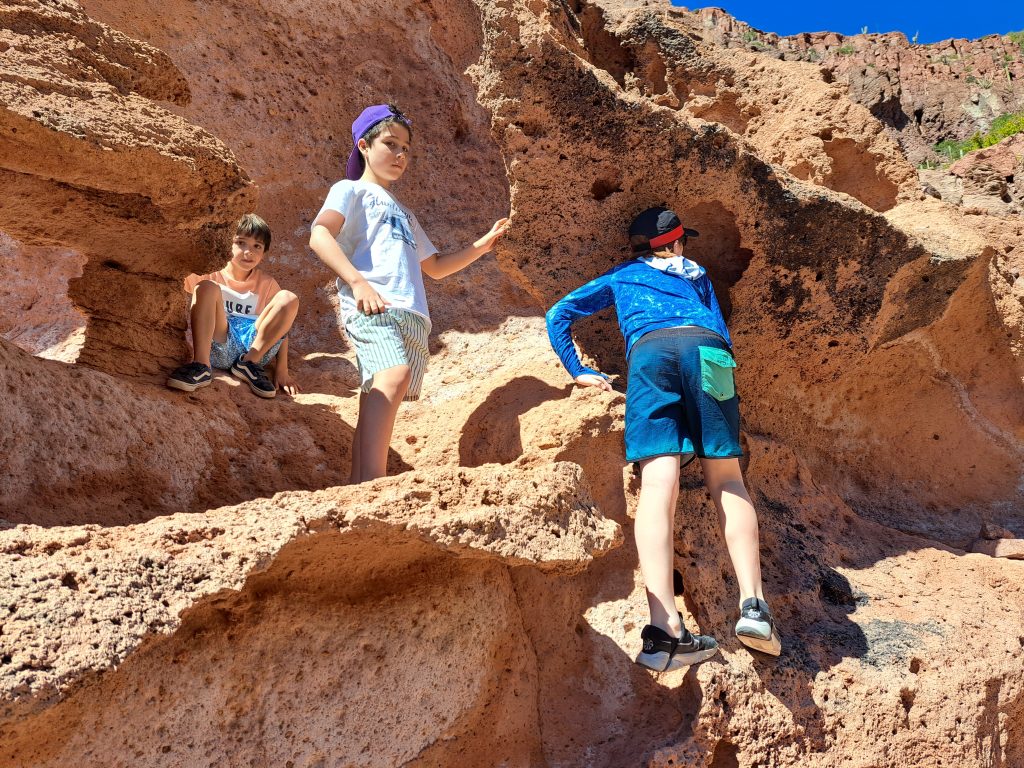
7. FAQ
Q: Is it safe to bring babies on a sailing holiday?
A: Yes, with preparation. We ensure proper PFDs, safe sleeping arrangements and strict supervision. Parents should discuss needs in advance so we can plan.
Q: What age can kids start sailing lessons?
A: They can start participating in age‑appropriate activities early, but for safe involvement in maneuvers we recommend age 10+. ISSA Yacht Crew is suitable from 10 years; Inshore Skipper requires 16+.
Q: How do you manage seasickness in children?
A: We use prevention: light, frequent meals, ginger or pressure bands, fresh air and limited screen use. If needed, we advise pediatric anti‑emetic options discussed before travel.
Q: Can kids swim and snorkel?
A: Yes, with supervision and suitable flotation aids. We run buddy systems and use dinghies for safe water access. Children who cannot swim wear life vests in water.
Q: What about medical care?
A: Crew carry first‑aid kits and AEDs where available, and are trained in emergency response. For extended needs we plan access to nearby clinics and medevac options as appropriate for the area.
Q: Will children be bored on board?
A: Trips mix activity and downtime — beach play, snorkeling, simple sailing tasks, and nature-based learning keep kids engaged. We design daily routines with variety in mind.
Q: Can we have a private instructor for child‑focused lessons?
A: Yes. We can arrange dedicated instructors to work with children and families on tailored skills and learning objectives.
Conclusion
Sailing with children in the Sea of Cortez offers a safe, restorative and educational family holiday — nature immersion, reduced screen time and real‑world learning. With careful planning, proper equipment, age‑appropriate instruction and friendly crew, families from babies to teens can enjoy life at sea. Contact Sail in Mexico to discuss your family’s needs, preferred season and training goals; we’ll propose a child‑safe itinerary and course plan that fits your family.

